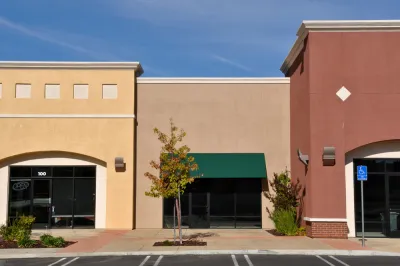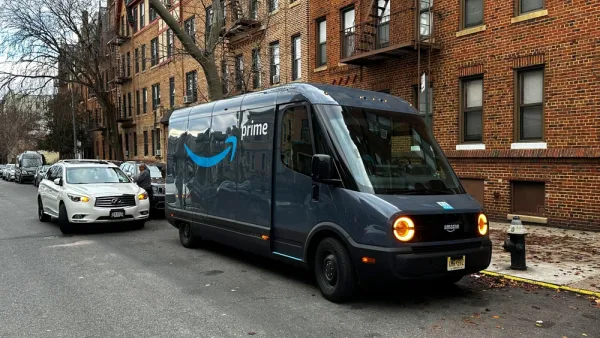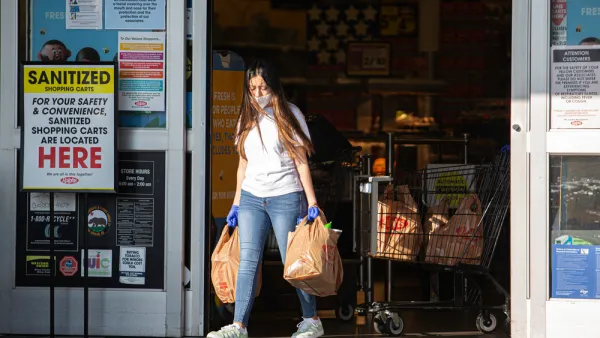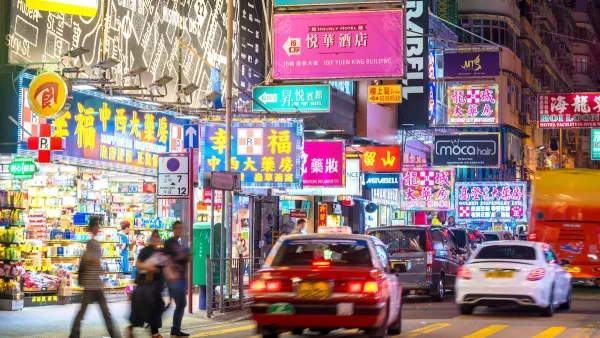The race to deliver goods at lightning speed has the potential to create 'dark cities' as street-level storefronts give way to closed-off warehouses only frequented by delivery workers.

Lev Kushner and Greg Lindsay posit that the growing trend of 'instant' delivery services "threatens to transform downtowns into dark cities, where the everyday commerce that gives streets their vitality has evaporated from view and been reconstituted on an app."
According to Kushner and Lindsay, app-based delivery services have started to occupy significant portions of commercial real estate in cities, replacing formerly vibrant storefronts with private warehouses. This threatens not just urban street life, they argue, but also the small businesses and restaurants that used to occupy street-level retail spaces. "The demand for convenience is seemingly bottomless, but no city has yet found a way to balance the short-term benefit of personal convenience against the long-term costs of eroding community life through decreased social interaction."
The article cautions public officials to anticipate the impact of these new business models, rather than try to retroactively regulate a new industry like they have with ride-hailing and short-term rentals. The authors recommend simplifying retail permitting, developing policies that incentivize mixed-use development, and improving transportation infrastructure to prepare for more delivery vehicles and workers.
While there is a place for a delivery industry, the article warns, "cities need to start thinking seriously, now, about how residents’ personal choices, and the businesses that respond to those demands, can unintentionally transform our cities and communities." In the same way that ride-hailing has added to congestion and vacation rentals have destabilized local housing markets, the 15-minute delivery model could have significant unintended impacts on urban life.
FULL STORY: The Dark Side of 15-Minute Grocery Delivery

Analysis: Cybertruck Fatality Rate Far Exceeds That of Ford Pinto
The Tesla Cybertruck was recalled seven times last year.

National Parks Layoffs Will Cause Communities to Lose Billions
Thousands of essential park workers were laid off this week, just before the busy spring break season.

Retro-silient?: America’s First “Eco-burb,” The Woodlands Turns 50
A master-planned community north of Houston offers lessons on green infrastructure and resilient design, but falls short of its founder’s lofty affordability and walkability goals.

Test News Post 1
This is a summary

Analysis: Cybertruck Fatality Rate Far Exceeds That of Ford Pinto
The Tesla Cybertruck was recalled seven times last year.

Test News Headline 46
Test for the image on the front page.
Urban Design for Planners 1: Software Tools
This six-course series explores essential urban design concepts using open source software and equips planners with the tools they need to participate fully in the urban design process.
Planning for Universal Design
Learn the tools for implementing Universal Design in planning regulations.
EMC Planning Group, Inc.
Planetizen
Planetizen
Mpact (formerly Rail~Volution)
Great Falls Development Authority, Inc.
HUDs Office of Policy Development and Research
NYU Wagner Graduate School of Public Service




























